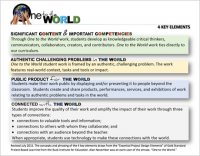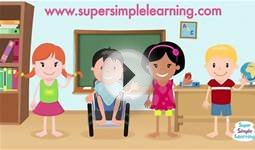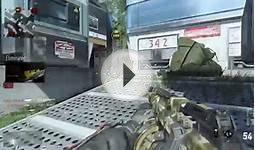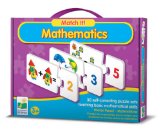Learning - IT
 Education Consultant, Advocate for Student Voice in Learning
Education Consultant, Advocate for Student Voice in Learning
Have you ever attended a conference session and seen groups of teachers leave in the middle? It's painful to watch, yet completely understandable. Often, they leave because the session was not what they expected. Let's be honest: when teachers and/or administrators attend learning experiences, what is the one non-negotiable expectation - without which the session is deemed a failure?
Answer: Leaving with skills and strategies that can be used immediately to impact instruction and work-related responsibilities.
Achieving this goal means understanding what the participants value, and engaging them in those areas. Effective professional development caters to what teachers think will help them become more effective. This also applies to their students. The learners may not be allowed to leave the classroom when the instruction doesn't involve them, but there are many other ways that they check out.
Student-centered classrooms include students in planning, implementation, and assessments. Involving the learners in these decisions will place more work on them, which can be a good thing. Teachers must become comfortable with changing their leadership style from directive to consultative - from "Do as I say" to "Based on your needs, let's co-develop and implement a plan of action."
This first of my three posts on student-centered classrooms starts with the educator. As the authority, teachers decide if they will "share" power by empowering learners.
Allow Students to Share in Decision Making
Placing students at the center of their own learning requires their collaboration. They need a voice in why, what, and how learning experiences take shape.
Why is about relevance. Learners need to understand the value of the subject, vocabulary, and skills before they are willing to invest effort. The answers "It's required curriculum, " "You need it for the test, " or "Because I say it's important" are intended to save time, but they only result in students giving lip service to the rest of instruction. Showing relevance from students' perspective is similar to teachers experiencing professional development that is job-embedded.
What is learned involves students choosing the focus of content. Let their interests drive the content that teaches skills and concepts. For example, when learning how to write persuasively, some students may want to deconstruct commercials, product reviews, op-eds, and/or social issue points of view. The best strategy is simply asking what students want to explore. Start with a brainstorm of what they like to do, and dialog together to match their interests with the skills and concepts.
You might also like





|
The Learning Journey Match It! Mathematics Toy (Total Toys)
|







